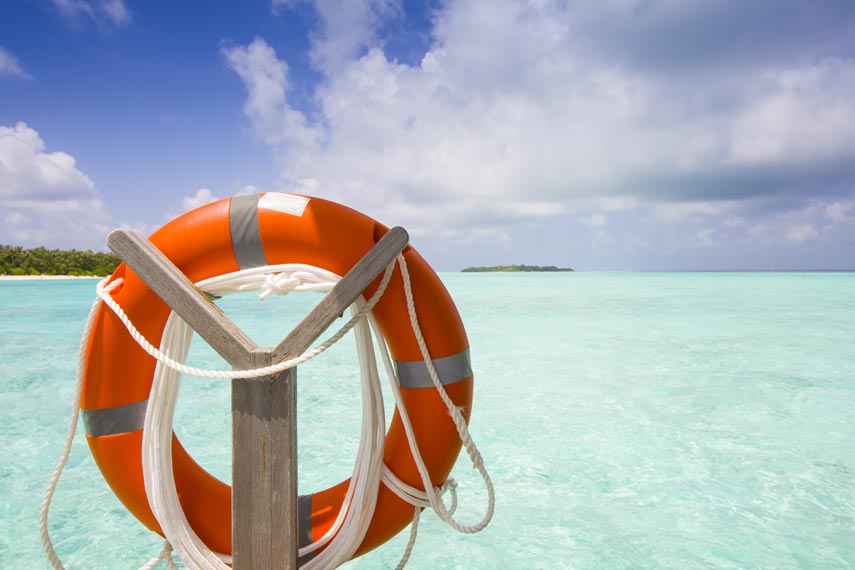2021 Summer Insurance Outlook: Travel, Home, Health and Events
BY MICHAEL GIUSTI
Summertime brings with it the promise of the open road, adventure, and lazy days by the water. But it should also bring to mind thoughts of protecting yourself and your family from risks brought along for the ride.
Especially in 2021, people are yearning for the dream of summer. Following the lockdowns of 2020 and the uncertainty brought by the coronavirus pandemic, summer is the perfect time to review all things insurance, paving the way for life to get back to normal.
Whether it is travel insurance to protect that perfect summer getaway, reassessing all your family’s insurance policies, finding a policy to protect an upcoming event, or even just relaxing with a newly legal joint (depending on where you live obviously), this 2021 Summer Insurance Outlook aims to lay out our best seasonal insurance advice.
Travel Insurance

Trips are expensive, and wasting the expense for a costly getaway isn’t fun for anyone. Thankfully, while COVID-19 made a dramatic hit to the travel insurance industry, it didn’t derail the availability of policies moving forward.
Stan Sandberg, co-founder of Travelinsurance.com, said that while travel insurance was forced to pivot during the pandemic, it is back on track, with new policies ready to be written for this summer’s travel.
The main challenge travel insurers faced at the onset of the pandemic was that epidemics were generally excluded from most policies. That meant that if they had decided to, insurers could have chosen to just issue a blanket denial on all claims.
But rather than dig in their heels, Sandberg said many of the insurers instead pivoted toward their customers and treated COVID-19 just like it would have treated any illness that would have prevented travel – that is, they covered it.
In general, if a traveler contracted the coronavirus while they were traveling, Sandberg said that the companies reimbursed them for their costs.
“They opened up really a whole world of coverage that prior to COVID was not provided for in these plans,” Sandberg said.
“43% of Americans say that for their next international trip, they plan to have travel insurance”
And consumers appear to be seeing value in travel insurance as a product. According to a recent survey conducted by insuranceQuotes, 43% of Americans say that for their next international trip, they plan to have travel insurance. And that could translate to a lot of policies, because according to our same survey, 41% of Americans say they are planning a post-pandemic international trip.
Many destinations are still requiring that unvaccinated travelers go through a quarantine period, while others are lifting many restrictions for people who have taken the jab.
Some destinations, Costa Rica in particular, are going as far as requiring travel insurance for incoming travelers. After Costa Rica imposed the requirement that travelers show $50,000 of travel medical coverage, as well as $2,000 in accommodation coverage in the case of a travel interruption, many travel insurers updated their policies to accommodate those new limits, Sandberg said.
“We saw a flurry of activity, and a bunch of carriers modified plans or brought out new plans that brought out that requirement,” Sandberg said.
Thankfully for consumers, Sandberg said that the polices he is seeing on the market are sticking pretty firm in price, without any real post-pandemic inflation.
“Travel insurance is regulated by each state’s regulator, and that includes pricing,” Sandberg said. “Traditionally these policies are priced off two main variables – the age of the traveler and the trip costs that you were insuring. Those things really haven’t changed, so there really haven’t been any pricing reaction to COVID.”
When travelers are considering trip coverage, it is important to act quickly. Many policies, and particularly the popular “cancel for any reason” policies, require that travelers purchase them within a short timeframe of paying for the trip. Wait too long, and your options dwindle significantly.
“If you committed to a trip and then five months later get concerned and want to buy a policy, that’s too bad – it’s too late,” Sandberg said.
Another thing to keep in mind is that while the travel policies flexed their language to include catching the coronavirus as a covered event, in general they aren’t covering trips that were canceled by government shutdowns — more reason to consider a cancel for any reason policy — or even one of the relative newcomers, an interrupt-for-any-reason policy, which kicks in even after the first leg of your journey has begun.
The Whole Spectrum of Personal (and Family) Insurance

The pandemic has tossed many families’ finances into uncertainty. Whether it was dealing with a flood of incoming stimulus money, or dealing with extended layoffs and the maze of federal and state unemployment insurance, there haven’t been any shortages of personal finance questions coming out of the pandemic.
So, as families have been reassessing their finances, many are looking at the costs they pay for their insurance premiums. Respondents to our survey told us that 37% of Americans say the financial impact of the COVID-19 pandemic led them to reassess my insurance policies. And when they looked closer, many decided they didn’t necessarily like what they were seeing and told us that 62% of Americans believe they are likely paying more for insurance than they need to.
“37% of Americans say the financial impact of the COVID-19 pandemic led them to reassess their insurance policies… 62% believe they are likely paying more for insurance than they need to”
Auto
For consumers worried about their monthly premiums, one of the highest impact places they should start looking is their auto insurance. Start by assessing whether the coverage you have is appropriate to your situation.
Make sure the age, condition, and value of your vehicle warrants both comprehensive and collision insurance. Also, consider whether your finances could absorb a higher deductible in the case of a loss. Even raising the deductible by $250 can translate into much lower premiums.
Also, take a close look at your liability limits. But beware. While it may be tempting to skimp on liability to save a buck, dropping things like uninsured motorist coverage limits may cause you financial ruin later.
And always make sure to shop with many different insurance companies. Because of the ways that different companies assess risk, the same coverage with one company could be drastically less expensive than the exact same coverage with their competitor.
Health
Health insurance premiums are another place consumers can look to find some savings. While you traditionally have to wait for open enrollment to come at the end of the year to start shopping for health coverage, Congress has opened a Special Enrollment Period for Affordable Care Act policies. And with the Supreme Court putting the end to challenges to those plans, there is no reason to not sign up and see if your family qualifies for a federal premium subsidy.
But it is important not to wait, because that enrollment period closes August 15. After that you will have to wait until November until the next open enrollment period opens for the 2022 policy year.
Anyone who was laid off can also take advantage of a generous Congressionally funded benefit — COBRA insurance.
COBRA, which stands for Consolidated Omnibus Budget Reconciliation Act, is a way to extend your employer-provided coverage even after you are no longer employed. In normal circumstances, COBRA is a very pricy option, but in the American Rescue Plan, Congress decided to subsidize the entire cost of COBRA plans until at least October.
Life
The pandemic also gave people an opportunity to contemplate mortality, and with that comes a reassessment of their life insurance needs. According to our survey, 37% of Americans say they do not have a life insurance policy.
While nobody wants to think about their death, it is important to look at your finances honestly and ask the question: If you died, and your income wasn’t there anymore, who relies on you that would be left in a bind? Think about your budget, your mortgage, your student loans, your children’s future tuition, even wedding plans years down the road.
People who haven’t shopped for life insurance for a while are likely going to be pleasantly surprised. Term life insurance rates began falling about 20 years ago, and they are at historic lows. For most people, moderate sized term life policies are very approachable.
And unless you have a wealth management plan that calls for a permanent life insurance policy, term policies are the way to go.
Home
Summer is a perfect time to do a checkup on homeowner’s or renter’s policies. That is especially true following the pandemic, where industry estimates show that as many as three out of four homeowners took on a renovation project during the pandemic — and a record number of new pools were sunk into back yards across the country.
All of that is a great time to reassess your homeowner’s insurance needs.
Adding things like rooms, bathrooms, and even solar panels all mean that the valuation of your property may have gone up, and so you may need more insurance. And that pool, or trampoline, or even that puppy you adopted during lockdown, all may mean your risk has creeped up, too, and so might your premium.
Summer also brings with it the risk of natural disasters, whether that be hurricanes, wildfires, or really anything Mother Nature throws at you.
When you are looking at your policy, consider whether your dwelling coverage is sufficient. If your house burned to the ground, will your policy be enough to build it back the way it was? And double check that your policy covers wildfires, if that is a risk where you live — not all of them do.
Also give a good look to what is inside your home. Does your coverage give you enough to replace all your contents? Don’t assume it does. The stuff you own adds up fast, so make a room-by-room inventory of everything you would want replaced. Video walkthroughs and photos help a lot here.
Some policies even help pay for landscaping — presuming it was destroyed in a covered peril, such as a named storm or fire, rather than just natural causes.
Another important area to look at your policy is an area called “loss of use.” That is, if you have to evacuate, how much will your insurer pay you for that temporary displacement? Many cover hotels and meals and some other costs if you are ordered out of your home.
And in advance of any disaster, do as much as you can to mitigate the risk ahead of time – buying storm shutters, cleaning gutters, clearing back your tree line and removing yard debris all can prevent a claim in the first place.
Also be aware that homeowner’s policies never cover floods, so it is a good idea, whether you live in a flood-prone area or not, to purchase flood insurance from the National Flood Insurance Program. Your existing agent would be more than happy to help you with that.
Natural disasters aren’t the only perils worth thinking about during the summer. Even fun things, like having friends over for a backyard barbecues or a dip in your pool can bring some risk.
Make sure your homeowner’s liability limits are appropriate for the risks you are taking. An additional umbrella insurance policy may make sense if you regularly have kids over to swim, or if you have a nervous dog who might confuse a squeal of delight with a threat.
And be smart. It is never a good idea to let your friends drive home after imbibing too much, especially in those states with so-called social host liability rules that hold you responsible if someone gets into a crash on the way from an event where you served them alcohol.
Cannabis Business Insurance

Cannabis is having a moment in the United States. According to our survey, 75% of Americans believe that it’s inevitable that adult use marijuana will be legalized in all 50 states. And state legislators are beginning to take notice, with nearly a score of states fully legalizing recreational marijuana, and many more states changing laws to various levels to liberalize rules related to the drug.
Still, according to the federal government, cannabis and all its psychoactive products are still controlled substances, which means that for nearly every insurance policy, marijuana is a problem.
Medical marijuana is not covered by any health insurance because of its federal classification, which goes against the apparent will of our survey respondents. According to our survey, 70% of Americans believe that medical marijuana should be covered by health insurance.
Still, without a nod from the feds, or the research and grant funding that might accompany legalization and potentially prove its medical use, medical insurance for cannabis is still sidelined, even if recreational pot is fully legal in your state.
Simple business insurance is also a struggle for companies that deal with cannabis. A few insurers, particularly some based in London or Canada, are offering some business coverage to cannabis growers and retailers. And Congress is considering a few bills that would make it easier for insurers to protect cannabis-related businesses. But as a whole, finding proper coverage is a struggle.
“70% of Americans believe that medical marijuana should be covered by health insurance”
As for personal insurance, the case law can be a little muddled when cannabis gets involved. One thing is absolutely certain, though, and that is that driving under the influence is illegal, whether pot is legal or not, just as it is with alcohol. Drivers who get tagged with a DUI for marijuana are certain to see their auto insurance rates skyrocket.
One debate the courts are still struggling with, however, is how to establish if someone was driving under the influence of marijuana, or if they merely had it in their system from several days ago that is still showing up in a blood sample. For now, there aren’t good roadside testing options for police, making a DUI assessment largely based on demonstrable impairment.
When it comes to homeowner’s insurance, there is some mixed case law about whether cannabis should be covered in the case of a grow accident of if the plants were stolen. The more legal the activity involved is, the more likely it is to be covered, but that hasn’t been universally true, again, largely because of federal prohibition and the legal cloud that casts.
There are also questions about whether life insurers will give their best rates to marijuana users. Some have been looking the other way, while others see it much like they see tobacco or some other substance use and are raising premiums accordingly.
As legalization continues to become more widespread, and as studies are allowed and more case law emerges, some of these questions will begin to get more firm answers.
Events Are On Again, Is Insurance Ready?

One of the areas of the economy absolutely crushed by the pandemic was special events, whether that was a convention, a concert or festival, or even just a family wedding. It all came to a crashing halt thanks to the coronavirus, said David Carbrey, owner of Direct Event Insurance Brokerage LLC.
A typical special events policy covers event liability — like damage to the venue because of negligence, or even an injury to one of the participants. And that aspect of the policy was largely unaffected by the pandemic. However, there is an add-on coverage for event cancelations. And that is where the industry took a beating.
“Every cancelation policy that was in place when COVID hit the news, they all got canceled. And they all got covered,” Carbrey said. Because the coronavirus was an unknown threat, most cancelation policies kicked in — unless they specifically excluded epidemics and pandemics. “Basically, it was a teachable moment there,” Carbrey said.
Now that COVID-19 is known, no new policies would cover a cancelation because of it. And for that matter, most newly written policies also specifically exclude pandemics and communicable diseases. That said, policies covering events are “absolutely being written,” Carbrey said.
He said some underwriting details were tightened, and many automated systems that were in place to issue the policies before the pandemic are no longer in place. “As a rule, underwriters are putting eyes and hands on everything,” Carbrey said.
But, policies are available. And that is good news to an industry that is quickly coming back to life. One study by Visit California showed that travel was quickly expected to rebound to 75% of its pre-pandemic levels — with the exception of international visitors.
And according to travel industry research the U.S. should be mostly vaccinated in just a few more months, leading to an acceleration in demands in all segments of travel, including many special events. Even concerts are roaring back, with the “Hella Mega Stadium Tour,” featuring Weezer, Green Day and Fall Out Boy, which was postponed in 2020, resuming its tour at the end of July, for example.
With that rebound, producers are again insuring those events, but Carbrey said they are going to find that rates for cancelation products have gone up — in some cases by more than double their pre-pandemic pricing. On the other hand, the liability portion of those products didn’t face quite the same headwind, but even they will likely have communicable disease exclusions written into their new policies.
“But the good news is that we haven’t seen anything that we can’t do anymore that we used to before the pandemic,” Carbrey said. “Everyone is hoping to get back to normal.”
Insurance Isn’t Out for Summer
If we learned anything in grade school, it is to look forward to summer. And as the country continues to emerge from the pandemic, summertime opportunities are going to be evermore tempting.
Whether people are traveling, or they are redoubling their at-home enjoyment, summertime is also a great opportunity to look at all areas of your insurance life.
Methodology
The survey for insuranceQuotes’ Innovation and Insurance Report was conducted online using Survey Monkey. The national sample of 1,081 adults spans across U.S. geographic regions and income levels and was weighted to reflect the gender distribution and the age distribution across the 18-44 and 45+ age brackets in U.S. census data.
